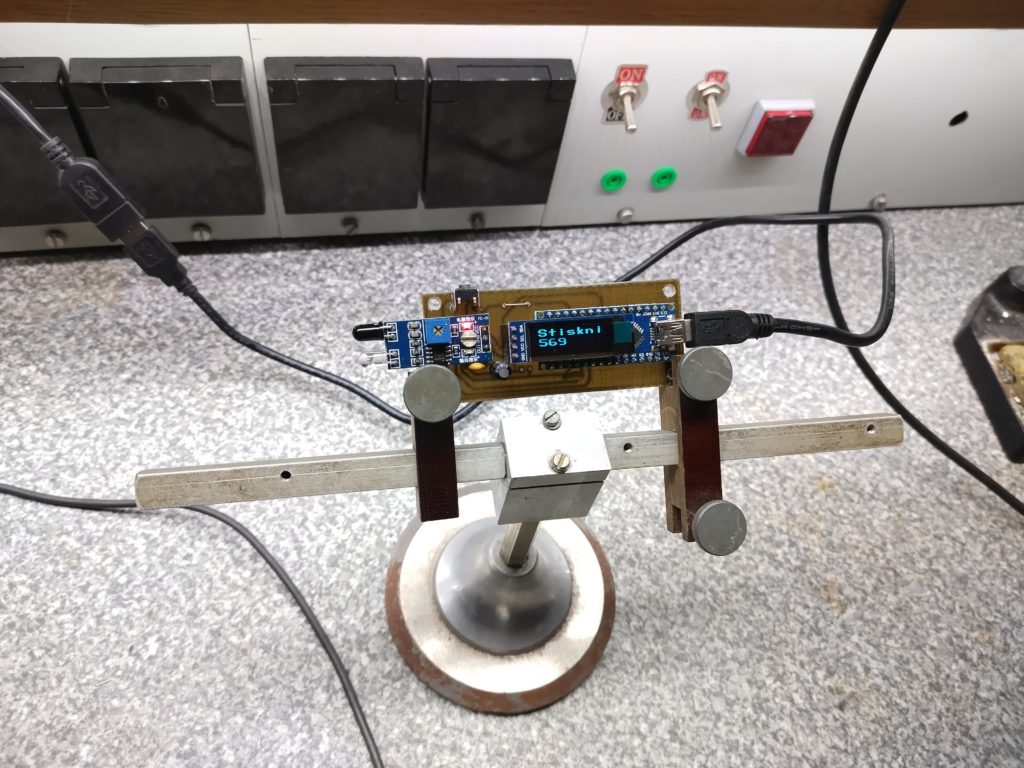A DIY non-contact digital tachometer for machinists

A tachometer is a device that counts the revolutions of a rotating object, with the most well-known example being the automotive tachometer that monitors the revolutions per minute (RPMs) of an internal combustion engine. But tachometers are useful, and sometimes a requirement, in many other applications. RPM is a very important datum when working with machine tools like lathes and milling machines, which is what this DIY non-contact digital tachometer was designed to accommodate.
The term “feeds and speeds” refers to the parameters a machinist uses to achieve the ideal tool load. A vertical milling machine’s end mill, for example, can only remove a certain amount of material with each stroke of each cutting flute. For that reason, it is imperative that a machinist know how fast the end mill is rotating. Most modern machine tools (not just CNC tools, but also manual tools) include a digital RPM display. But many older machines and some modern machines with low-cost VFDs (variable-frequency drives) do not and that makes it very difficult to maintain optimal load. This DIY device addresses those shortcomings in an affordable way.

Inside of the device’s 3D-printed enclosure are an Arduino Nano board, an infrared distance sensor module, a 0.91” 128×32 OLED screen, a lithium-ion battery, and a TP4056 lithium battery charging module. Any time the infrared sensor sees a strong reflection of its emitted light, it counts a pulse. But timing the delay between pulses, the Arduino can calculate the RPM and then display that number on the OLED screen. The user only needs to mount the device in front of the object to monitor, like a mill’s spindle or a lathe’s chuck, and put a 6mm-wide piece of white tape in front of the infrared sensor. Every time that white tape passes in front of the sensor, it reflects a lot of light for the sensor to detect as a pulse.
This doesn’t require any physical modification of the machine tool, because it runs on battery and doesn’t need to make physical contact with the spindle, so it is perfect for machinists working on an employer’s equipment.